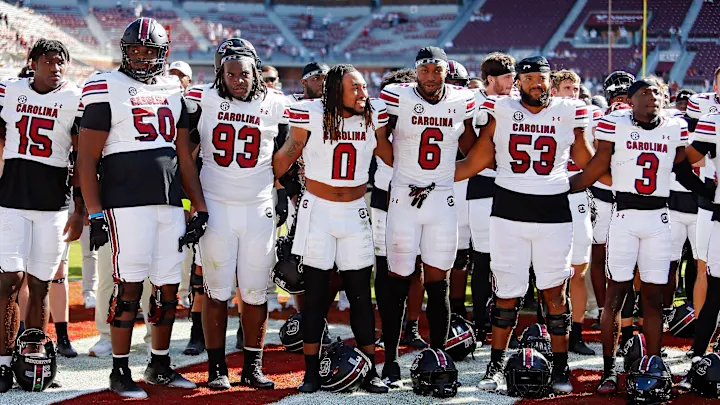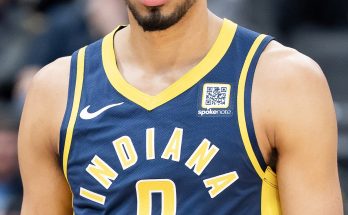As the 2025 football season looms on the horizon, the South Carolina Gamecocks are preparing for a crucial spring football offseason. The spring football session is one of the most anticipated times of the year for college football teams, serving as an important period for players to develop, coaches to evaluate talent, and fans to get an early preview of the upcoming season’s potential. For the South Carolina Gamecocks, a program rich with history and striving for greater success in the competitive SEC landscape, the six-session spring football period is crucial for building chemistry, fine-tuning strategies, and setting the tone for the upcoming campaign.
This year, the Gamecocks are gearing up for what promises to be another exciting season, following a series of highs and lows that have defined their recent seasons. With the spring football period broken into six distinct sessions, each one holds specific goals and provides valuable opportunities for the coaching staff to assess players, implement new schemes, and work on both individual and team development. Let’s take a closer look at what each of these six sessions entails and how they contribute to the overall growth of the South Carolina Gamecocks football program.
1. The Importance of Spring Football in the Offseason
Before diving into the specifics of the six spring sessions, it’s important to understand the role that spring football plays in the broader context of a college football team’s offseason. Spring practices are a valuable opportunity for teams to get in some additional practice time without the intense competition of the regular season. Unlike regular fall practices, which focus on preparing for specific opponents, spring practices allow coaches to focus on fundamentals, player development, and experimentation with new plays, schemes, and personnel.
Spring football also serves as a critical evaluation period for both returning players and incoming recruits. For veterans, it’s a chance to work on improving their skills and getting familiar with any changes to the team’s strategies or coaching staff. For younger players and incoming freshmen, spring football offers a first opportunity to compete at the college level and gain a better understanding of what it takes to succeed in the SEC.
For the South Carolina Gamecocks, spring football is vital as they continue to push forward with their program’s goal of competing at a higher level in the Southeastern Conference. After experiencing some growing pains in recent years, the Gamecocks are looking to make significant strides and position themselves as a legitimate contender in the SEC East.
2. The First Session: Installing the Fundamentals
The first spring football session is all about laying the foundation. This is where the coaching staff establishes the team’s core principles for the upcoming season, emphasizing fundamental skills and techniques that are critical for the success of the entire program. During this initial practice, the focus is often on individual drills that help players refine their blocking, tackling, passing, catching, and footwork.
For head coach Shane Beamer and his staff, the first session is also a time to evaluate the new recruits and assess how they are adjusting to the college game. It’s an opportunity for the coaching staff to identify areas where players need improvement and where they are excelling. Whether it’s a freshman wide receiver trying to adapt to the speed of SEC competition or a seasoned quarterback looking to adjust to new offensive schemes, the first session is a crucial starting point for their development.
Moreover, the first session provides an opportunity for Beamer to evaluate the leadership dynamics within the team. With the departure of some key seniors from the previous year’s squad, the leadership roles are in flux, and the first spring practice is an important time for the coaching staff to observe which players step up vocally and in their play on the field.
3. The Second Session: Special Teams and Individual Evaluation
Special teams play an integral role in the outcome of any football game, and the second spring session emphasizes that aspect of the Gamecocks’ preparation. Whether it’s kickoff coverage, field goal attempts, or punt returns, special teams are often the deciding factor in close games. This session allows the coaching staff to evaluate both the veterans and new players who are looking to earn their spots on special teams units.
During this session, position coaches will work closely with players to refine their individual skills. Special teams often rely on players who might not start at their primary position but are expected to contribute in other ways, so evaluating these players’ performances in practice is essential. The Gamecocks coaching staff is also keen to find any hidden gems who might excel in special teams play, as these athletes can often make a huge impact on a game without having to rely on offensive or defensive roles.
For instance, this is the time to assess players who might be working as kick returners or gunners on the punt team, as well as those who are vying for the starting job as the kicker or punter. The Gamecocks have seen in past seasons how crucial special teams can be in tight contests, and Beamer will ensure that every player on the team understands their role and responsibilities in these high-stakes situations.
4. The Third Session: Offensive and Defensive Scheme Installation
By the time the third session arrives, the Gamecocks are diving deeper into their respective offensive and defensive schemes. With the foundation set in the previous practices, this session is when the focus shifts to implementing plays and strategies that will define the team’s style of play for the upcoming season.
Offensively, the coaching staff works to develop the team’s identity. Whether it’s refining the passing game or working on the running game’s consistency, this session is crucial for determining which players fit best within the team’s offensive system. The quarterback position, in particular, is a major area of focus. With several quarterbacks on the roster competing for the starting role, the third session provides an important opportunity for the coaches to evaluate who has command of the offense and who can lead the team to victory in tough situations.
Defensively, the Gamecocks focus on building a strong, aggressive unit that can stop opposing offenses in their tracks. This session is critical for implementing blitz packages, coverage schemes, and defensive alignments. It’s also a time to evaluate how players are adapting to new defensive coordinators or system changes. South Carolina’s defense has historically been one of the program’s strengths, and this session helps coaches determine how the team can continue its legacy of tough, SEC-level defense.
5. The Fourth Session: Position-Specific Drills and Depth Chart Evaluation
At this point in the spring, the coaching staff has a better idea of where players stand in terms of skill level and ability. The fourth session is focused heavily on position-specific drills, with individual coaches working intensively with their respective players to fine-tune skills. Whether it’s a defensive lineman perfecting his pass-rush technique or a wide receiver learning the ins and outs of a new route tree, this session is designed to give players an opportunity to improve their craft.
This session is also vital for evaluating depth. Coaches will take a closer look at the team’s depth chart, deciding which players will have opportunities to start and which will provide support in backup roles. The Gamecocks have some positions that are highly competitive, such as the wide receiver corps and defensive backfield, and the fourth session allows coaches to see who rises to the occasion.
For some players, this session represents a critical moment in their development. Whether it’s a rising sophomore who wants to earn more playing time or a transfer coming in with something to prove, the fourth session provides an opportunity to prove their worth and secure a spot in the rotation.
6. The Fifth and Sixth Sessions: Scrimmages and Final Evaluations
The final two spring sessions are often the most anticipated because they typically involve scrimmages or full-contact drills, giving players a chance to showcase what they’ve learned in game-like situations. These sessions simulate the intensity of real competition, and both coaches and players take these practices very seriously.
The fifth session typically involves a controlled scrimmage where the team works through a game situation, allowing coaches to evaluate how players perform under pressure. Whether it’s third-down situations or two-minute drills, these scrimmages provide a clear picture of which players are capable of handling the intensity of live action.
The sixth and final session is often reserved for a full scrimmage, where the team comes together to see how everything comes together. This is the final evaluation before the team heads into the summer offseason and prepares for fall camp. Coaches will analyze how players execute plays in a full-contact environment and make any final assessments about the roster heading into the next phase of preparation.
Building Toward Success in 2025
The spring football portion of the offseason for the South Carolina Gamecocks is a crucial time for the team to assess their talent, implement new schemes, and build chemistry. The six sessions provide a comprehensive opportunity for the coaching staff to fine-tune their team and prepare for the upcoming season. For the Gamecocks, these sessions represent a fresh start and an opportunity to lay the groundwork for a successful 2025 campaign. As South Carolina continues to grow under head coach Shane Beamer, these spring practices will help shape the team’s identity and set the tone for their SEC battles in the fall.



